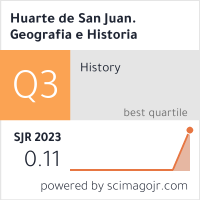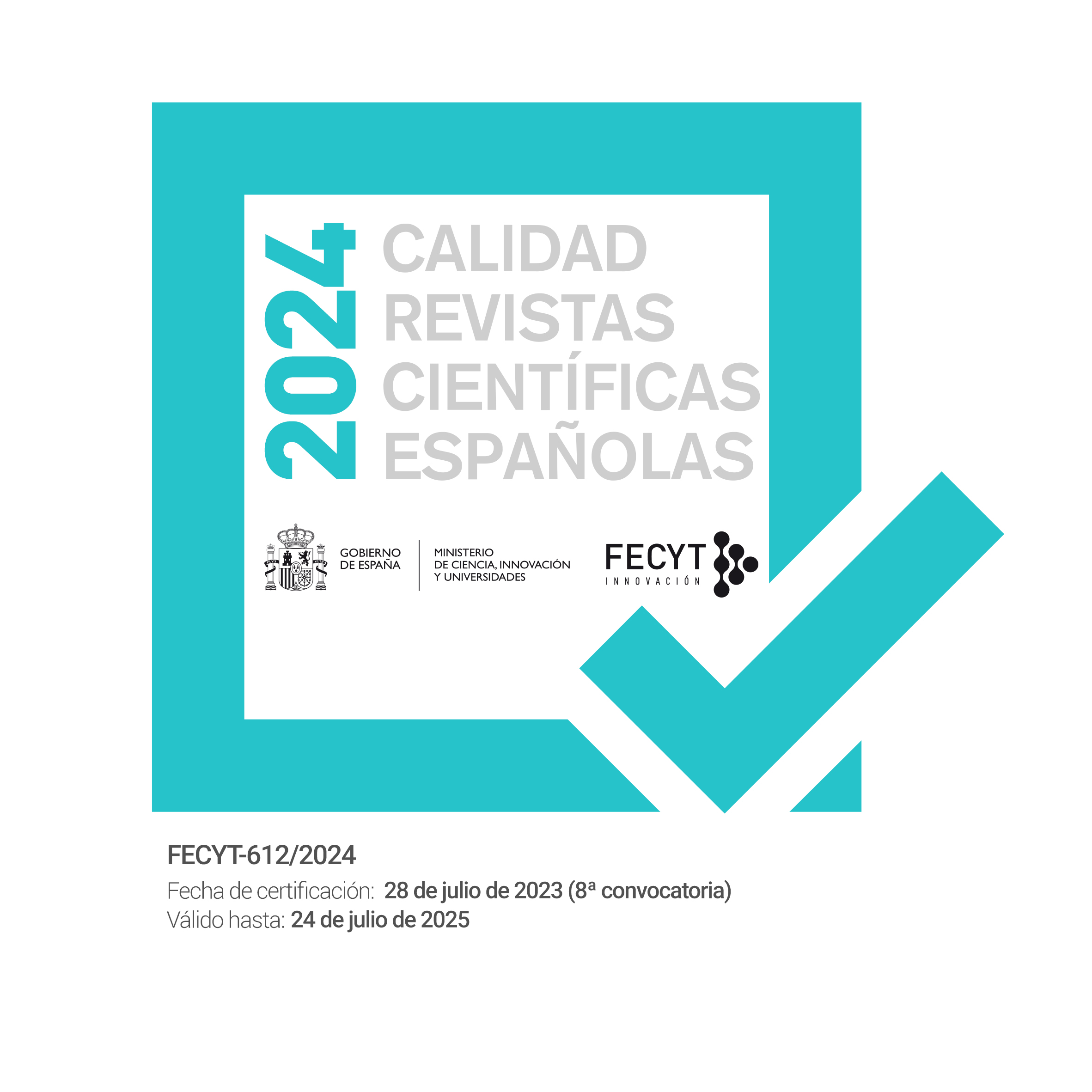Publication Ethics and Malpractice Statement
Huarte de San Juan. Geografía e Historia (hereinafter referred to as HSJ) declares its Publication Ethics and Malpractice Statement (PEMS) support combined efforts by the authors, members of the Editorial Board and Editorial Advisory Board, and reviewers to produce a responsible research publication. This statement is based on ethical principles that generally follow the lines established by the Committee on Publication Ethics (COPE).
- Author’s Responsibilities
Manuscripts submitted for publication must be based on original and unpublished research. They must include the data obtained and used as well as an objective discussion of the results. They must supply enough information to allow any specialist to reproduce the research and confirm or refute the interpretations defended in the manuscript.
Authors must be aware of and refrain from engaging in scientific misconduct and by breaching publishing ethics.
Authors should present their results clearly, honestly, and without fabrication, falsification, or inappropriate data manipulation.
All authors must ensure that the data and results reported in the manuscript are original and have not been copied, fabricated, falsified or manipulated.
Plagiarism in all forms, multiple or redundant publication, as well as data invention or manipulation constitute serious ethical failings and are considered scientific fraud.
Authors should provide appropriate authorship and acknowledgement. Authors must refrain from deliberately misrepresenting a scientist’s relationship with published work. All authors must have significantly contributed to the research.
Authors must tell the journal when they have a direct or indirect conflict of interest with editors or members of the Editorial Board or Editorial Advisory Board.
No significant part of the article shall have been previously published either as an article or as a chapter, or be under consideration for publication elsewhere.
When authors discover a serious mistake in their manuscript, they must report this to the HSJ.Historia’s Editor in Chief as soon as possible in order to modify the manuscript, withdraw it, retract it, or publish a correction o erratum notice.
If the Editorial Board detects the potential error, the authors must then demonstrate that their manuscript is free from error.
Authors are obliged, for all materials submitted, to participate in a peer review process and to follow publication conventions.
- Editor’s Responsibilities
The Editorial Board will be impartial when handling submitted manuscripts proposed for publication and must respect the authors’ intellectual independence, who must be given the right of reply if they receive a negative review.
Members of the Editorial Board are obliged to maintain confidentiality about the submitted manuscripts and its contents until they have been accepted for publication. Only then their title and authorship may be communicated.
Furthermore, no member of the Editorial Board may use data, lines of reasoning or interpretations in unpublished works for their own research, except with the author’s express written consent.
More information about the editorial process and arbitration system of HSJ.Historia in this section.
- Reviewer’s Responsibilities
Reviewers must know and keep in mind the Editorial policy and Publication Ethics and Malpractice Statement. They must follow the Reviewer’s Guidelines.
HSJ.Historia requires potential reviewers to have scientific expertise or significant work experience in a relevant field. They must have recently conducted research and/or work and have acquired recognized expertise by their peers. Potential reviewers should provide personal and professional information which is accurate and which gives a fair representation of their expertise.
All reviewers must likewise withdraw if they know they are unqualified to evaluate a manuscript, if they feel their evaluation of the material will not be objective, or if they understand themselves to be in a conflict of interest.
Reviewed articles are treated confidentially by reviewers and members of the Editorial Board and international scientific committee.
Reviewers should point out relevant published work which has not yet been cited in the reviewed material. If necessary, the editor may issue a correction request to this effect.
Reviewers are asked to identify papers where research misconduct has or seems to have occurred and inform the Editorial Board, which will deal with each case accordingly.
- Conflict of interest
Any commercial, financial or personal relationship that might influence the results and conclusions of the study, or its review process, must be declared at the time of the submission of the manuscript. In addition, all sources of financial support for the study must be reported. This information will be published in the article if the manuscript is accepted.
Manuscripts having conflict of interest resulting from competitive, collaborative or any other relationships or connections with institutions connected to the paper will not be considered.
Members of the Editorial Board and reviewers shall withdraw in any case of conflict of interest concerning an author or authors, or the content of a manuscript to be evaluated.
HSJ.Historia shall avoid all conflict of interest between authors, reviewers, and members of the Editorial Board and Advisory Board.
- Originality and plagiarism
All authors must ensure that the data and results reported in the manuscript are original and have not been copied, fabricated, falsified or manipulated. Plagiarism in all forms, multiple or redundant publication, and data fabrication or manipulation constitute serious ethical failings and are considered scientific fraud.
Authors must not submit to HSJ.Historia any manuscript that is simultaneously under consideration by another journal, and must not submit their manuscript to another journal until they are notified that it has been rejected or have voluntarily withdrawn it from consideration.
However, an article that builds upon an item published previously as a short report, brief communication or conference abstract may be published as long as it appropriately cites the earlier source it is based on, and as long as the new manuscript represents a substantial modification of the previous publication. In any case, secondary publication is not allowed in HSJ.Historia, including if the later manuscript is targeted at completely different readers.
After receiving a paper, the journal’s editors will send the text to UPNA’s Library’s Teaching and Research Support Section (institution editing the journal) to run it through the anti-plagiarism tool.
- Identifying and preventing misconduct
In no case shall members of the Editorial Board and Advisory Board encourage misconduct of any kind or knowingly allow such misconduct to take place. Members of the Editorial Board and Advisory Board shall try to prevent misconduct by informing authors and reviewers about the ethical conduct required of them.
Members of the Editorial Board, Advisory Board and reviewers are asked to be aware of all types of misconduct in order to identify papers where research misconduct of any kind has or seems to have occurred and deal with the allegations accordingly.
In case of misconduct, HSJ.Historia’s Editor in Chief is responsible for resolving the issue, working in conjunction with other co-editor, members of the Editorial Board and Advisory Board, peer reviewers , and experts in the field.
The issue will be documented accordingly. All factual questions should be documented (who, what, when, where, why). All relevant documents should be kept, in particular the manuscript and review forms concerned.
The HSJ.Historia’s Editor in Chief in shall contact the author(s) or publication involved, either the authors submitting or another publication or author. The author is thus given the opportunity to respond to or comment on the complaint, allegation, or dispute.
In the event that misconduct has or seems to have occurred, or in the case of needed corrections, the Editorial Board deals with the different cases by following the appropriate COPE recommendations. Great care will be taken to distinguish cases of honest human error from deliberate intent to defraud.
The Editorial Board will consider retracting a publication in case of misconduct, issuing an expression of concern in case of inconclusive proof of misconduct; or issuing a request for the correction of a misleading segment.
- Corrections and Retraction Policy
7.1. Article Withdrawal
Either the Publisher or the author of the article can withdraw the same. An article can be withdrawn at any point in time before it is formally published online in its final form with complete information about volume, issue, page numbers, etc. If the article withdrawal request has been initiated by an author, they need to submit a signed letter to the Editor in Chief prior to article withdrawal. Editor in Chief can withdraw an article if it is found to violate the ethical publishing guidelines, like duplicate publication, plagiarism, fraudulent usage of data, multiple submissions, bogus claims of authorship. In both the cases, the article PDF will be removed and a note that the article has been withdrawn will be displayed.
7.2. Corrections to a Paper
If an error is discovered in an already published paper, Erratum, Corrigendum or Addendum will be published in an issue once the proposed changes are in agreement with Editor in Chief and Author. Only significant corrections will be published (v. gr. inaccurately published information). Minor corrections like spelling mistakes or grammatical errors which do not alter the understanding of the paper will not be corrected. When a correction is published, the original article reference will be given in the corrected PDF and vice-versa. In any case, only the corrections will be mentioned.
Original article will not be modified, but correction link will be available on the article page. This will help readers to download both the PDF. An Errata will be published only when mistakes are recognized in the published article which went unnoticed during Editing and Layout setting in Figures, Tables, etc.
Corrigenda is published when authors realise that errors in the published article could affect the validity of the scientific content, or its accuracy. If a reader detects an error in a published article, they can submit the same as a letter to the Editor in Chief. The author, editor and a reviewer would then assess the validity of the error pointed out. Corrigenda will then be published with reference to the letter and the answers provided by the author.
Addenda is published if authors have omitted a significant information inadvertently during manuscript submission and would like to add this content to the article after publication. The information provided for addendum will undergo peer-review prior to editorial acceptance. Addendum publication is very rare and will be allowed by Editorial Board only if the information is very much essential to understand a significant portion of the published paper.
7.3. Article Retractions and expressions of concern
The Editorial Board reserves the right to retract published articles which are subsequently determined to be unreliable due to unintentional error or scientific fraud or misconduct: data fabrication, manipulation or appropriation, text plagiarism and redundant or duplicate publication, omission of references to sources consulted, use of content without permission or without justification, etc. The purpose of retraction is to correct the scientific record of publication and thereby ensure its integrity.
In case of a conflict regarding duplicate publication caused by the simultaneous publication of the same article in two different journals, the date the manuscript was received by each journal will be used to decide which of the two versions should be retracted.
The journal will publish the retraction notice in the volume where the article in question was originally published, and the notice will mention the reasons, in order to distinguish between misconduct or an inadvertent error. The journal will notify the responsible authorities at the authors’ institution of the retraction. The decision to retract an article should be reached as soon as possible in order to prevent the misleading article from being cited by other researchers.
Retracted articles will remain available in the electronic edition of the journal, and will be identified clearly and unambiguously as retracted in order to distinguish retractions from other corrections or commentaries.
Prior to final retraction, the journal may issue an expression of concern in which the necessary information is provided with the same wording as used for a retraction. The expression of concern will be used for as brief a period as possible and will be withdrawn or superseded, if appropriate, by formal retraction of the paper.








